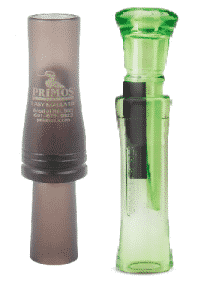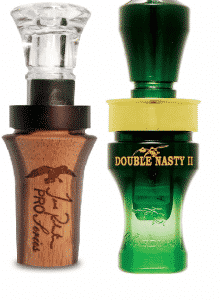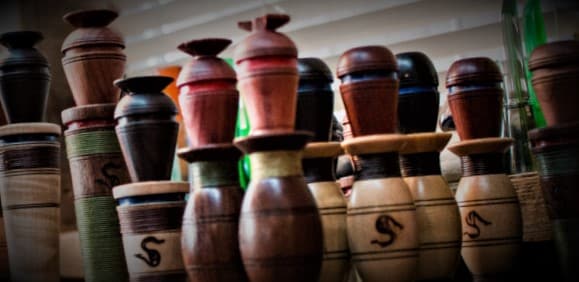A duck call is just like any other musical instrument. Sometimes you’re going to have to tune them to make the proper sound. Sounds produced by blowing air across the read in a specific pattern. If the read isn’t functioning properly your call will result in some wonky duck noises. Luckily just about any duck call can be tuned to produce realistic sounds. It isn’t hard to fine-tune your dock called to bring in more mallards this hunting season.
How To Tune A Duck Call
to make quality sounds a duck call needs to be properly tuned. You need to match your air pressure and calling style with your duck call. Almost any duck call can be tuned to produce a full range of high and low notes. With the knowledge of a few basic duck calls you’ll be able to make a flock of ducks turnaround in their tracks.
What Kind of Duck Call Do You Have?
Before you can tune your duck call you need to figure out what kind of call you actually have. If you’re a duck call beginner you should figure out if you of a single reed or double reed call. Just like on a flute or clarinet a duck call uses a very specific reed to produce its noise. Most calls fall into either a single reed or double reed category. Both of these calls can be tuned, but they use slightly different methods.
Tuning a Single Reed Duck Call
Single Reed duck calls offer more range and flexibility to the hunter. With that range and flexibility comes a more challenging call. You need to know what you’re doing to master a single reed call. If you’re new to single reed calls try the Uncle Si Single Reed Call and Primos Easy Mallard Call . I love the range that these two calls offer; providing a robust sound out-of-the-box. That being said every new duck call can use a little tuning.
The first step in tuning your single Reed duck call is to check the wedge and make sure it hasn’t slipped. Allege that slightly out of alignment or dried out will result in a funky sounding call. If it doesn’t fully seat into your call you’re going to need a replacement. You’re either going to need to call the manufacturer for make your own out of cork. The main method of tuning your call is to trim off a little sliver on your reed. Trimming your reed will give the call a higher pitch that should some more accurate. Use scissors to trim off 1000th of an inch at a time and reassemble the call to test it. Repeat the process until you have the desired pitch.
If you’re looking for a little more raspiness you’re going to have to take a different approach. To add a little bit of raspiness you’re going to have to rough up the tone board a little bit. Rough up the board simply sanded with 220 grit sandpaper or cut off the corners with a tiny diagonal cut.
Tuning a Double Reed Duck Call
Beginner duck Hunter should probably start out with a basic double Reed duck call. Tuning a double Reed call is a little harder but it’s not too bad. There are a few more moving parts that need to be adjusted that can alter the tune of the call. While a double Reed call is a little harder to adjust, it is far easier to play. Almost anyone can get a good sound out of a double Reed call. My two favorite double reed calls for beginners are the Buck Gardner Double Nasty and Duck Commander’s Pro Series Duck Call.

To adjust your double Reed call first you’re going to need to pull the barrel off and take a look at the insides. Take a mental note, or better yet take a photo of all the working parts. Make sure you know the distance between the reeds the wedge and the tone board. A little variation will mean a big difference in the overall sound. To tune your call simply move the wedge back and forth to adjust the sound. Move the wedge back to lower the pitch and forward to raise it. Make sure that you don’t adjust the positioning of the reeds when adjusting the wedge. Make sure you test the call every time you adjust the wedge.
If you still don’t like the sound of the call after adjusting the wedge, you’re going to have to do a little DIY work. Just like with the single Reed call you are going to have to trim very slightly with scissors. If you want to add a little bit of a rasp offset the top Reed a little farther back than the lower read. A little bit of movement will do a lot.

